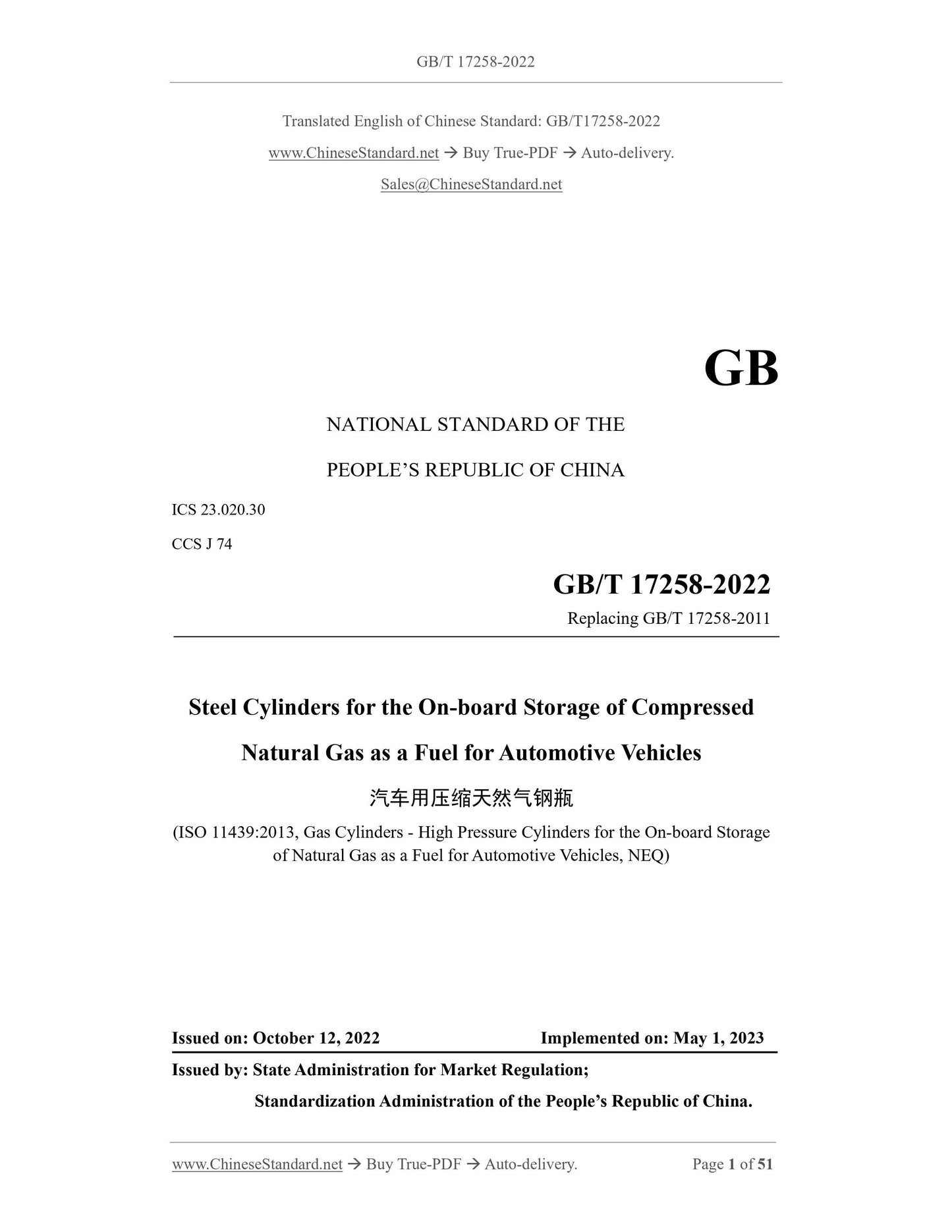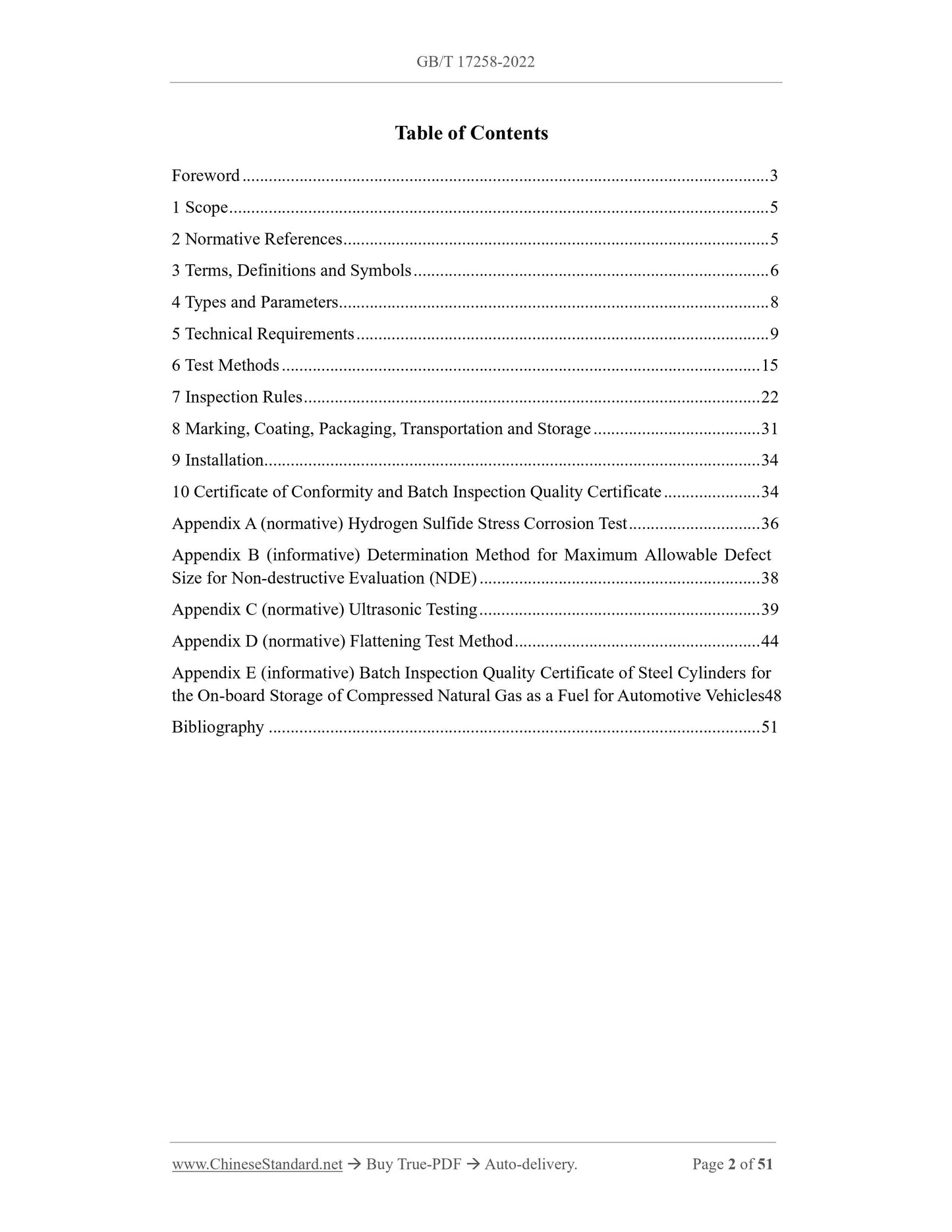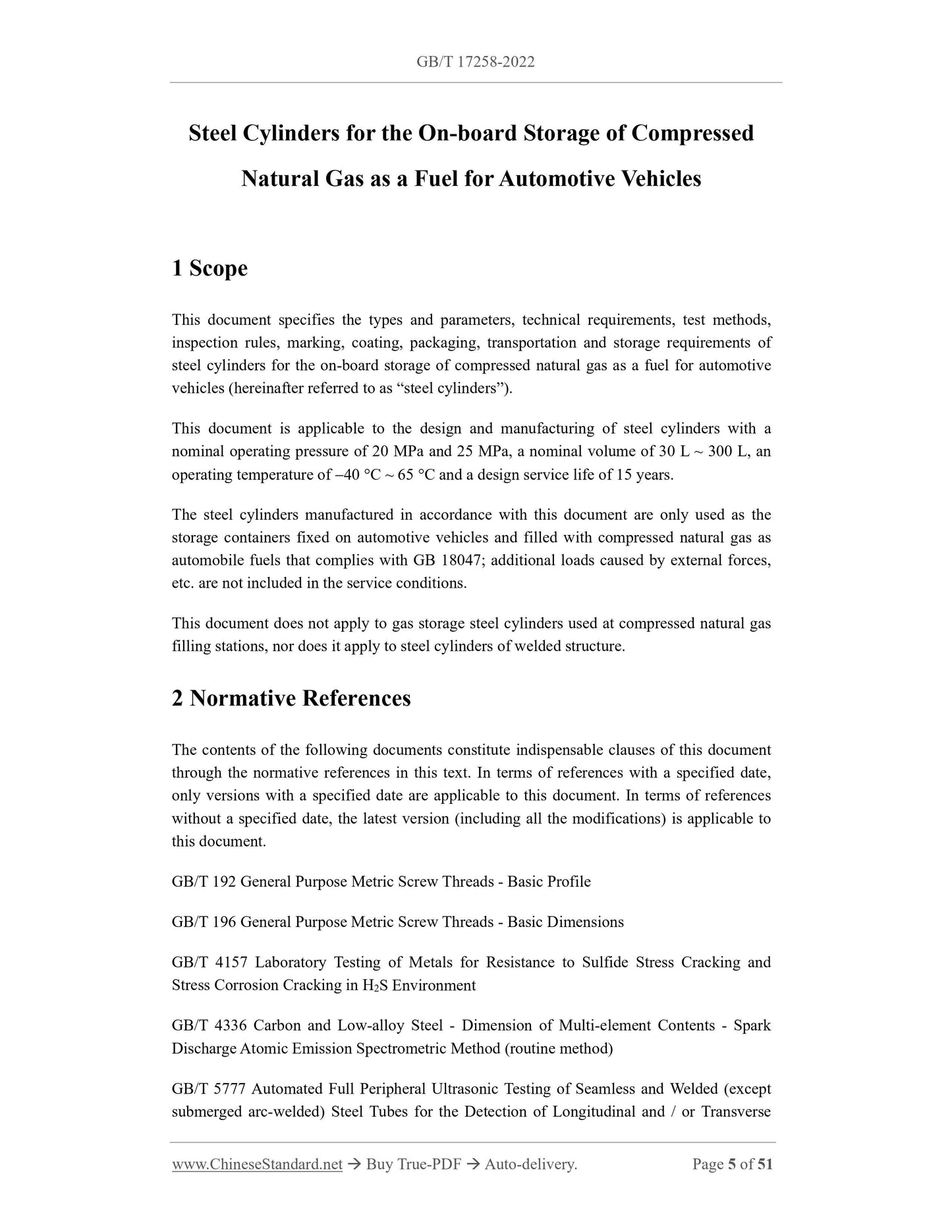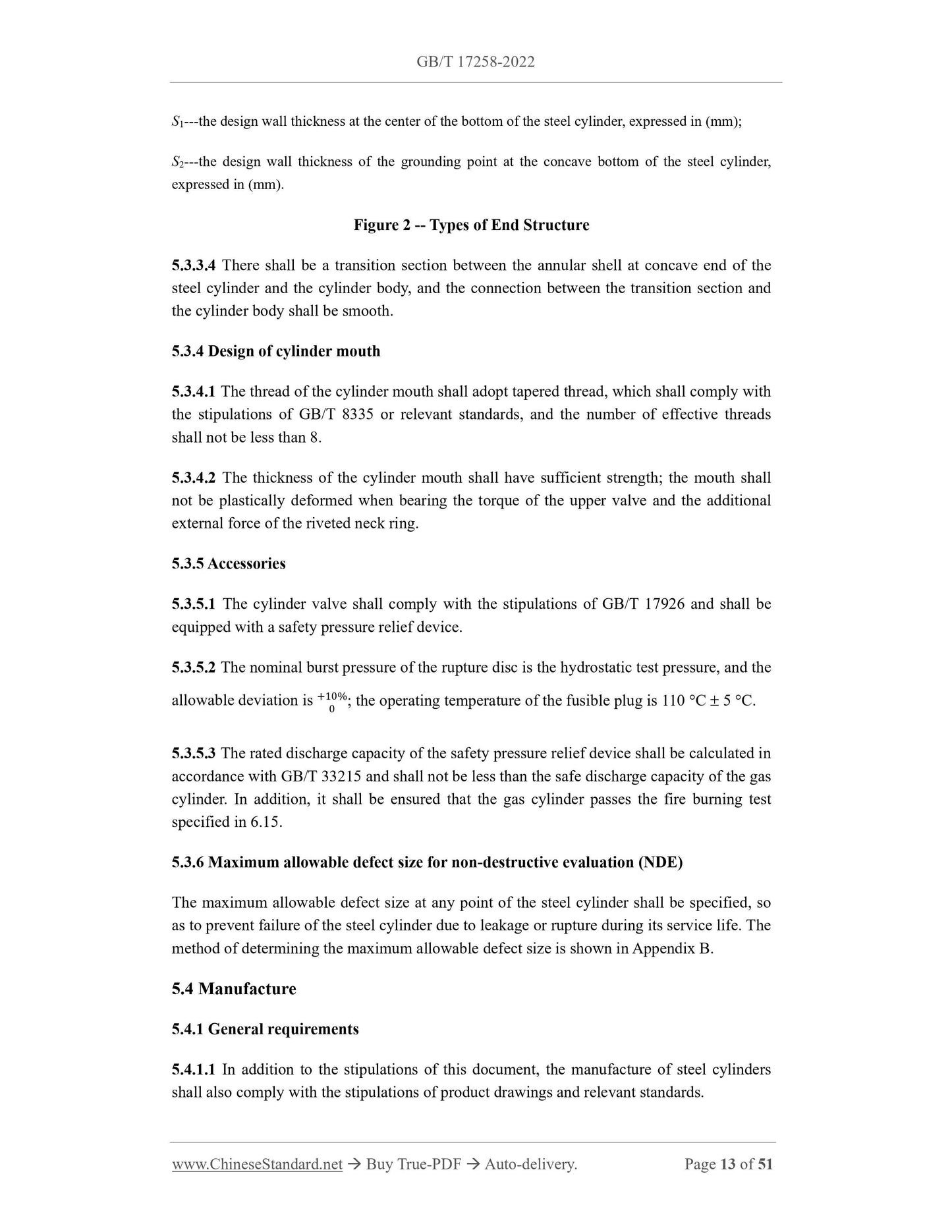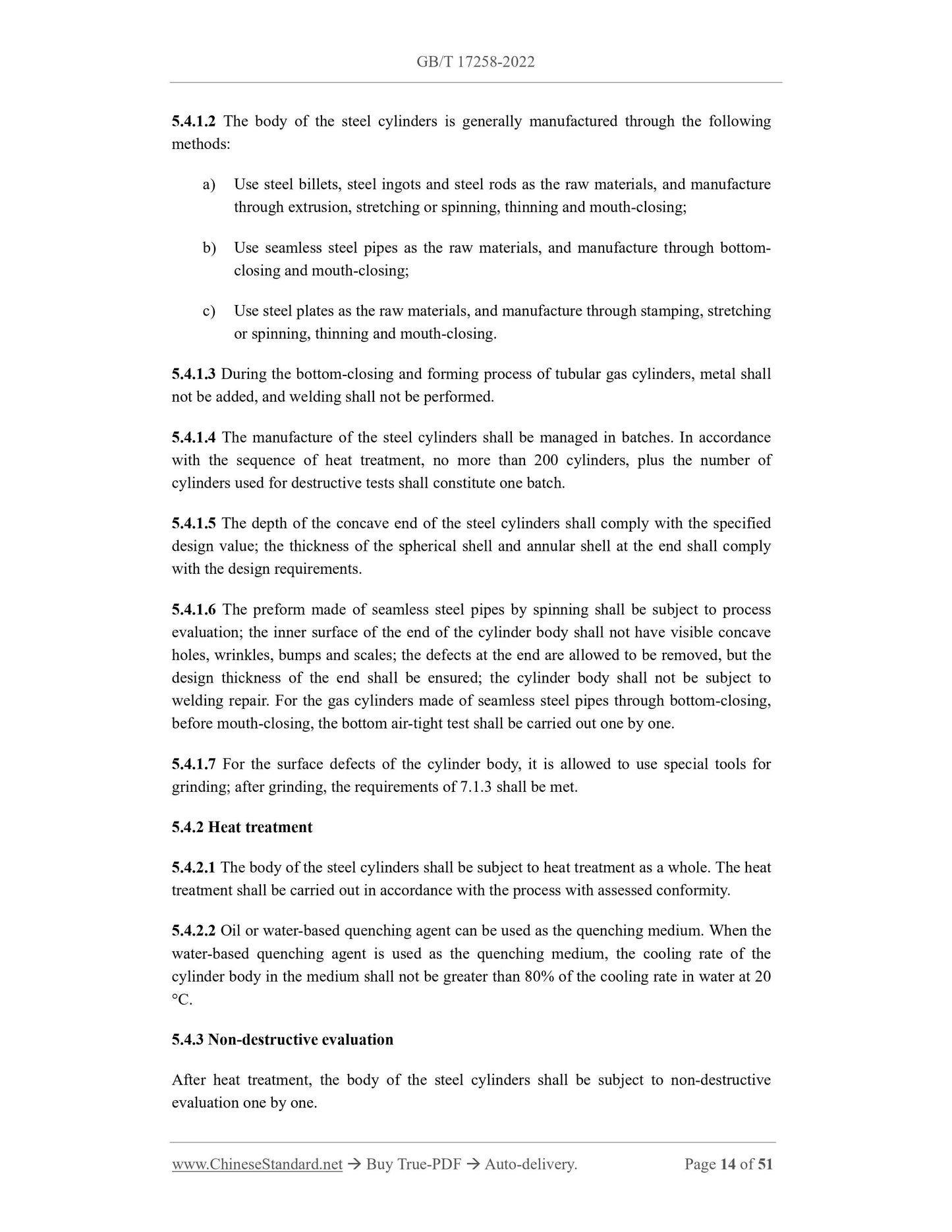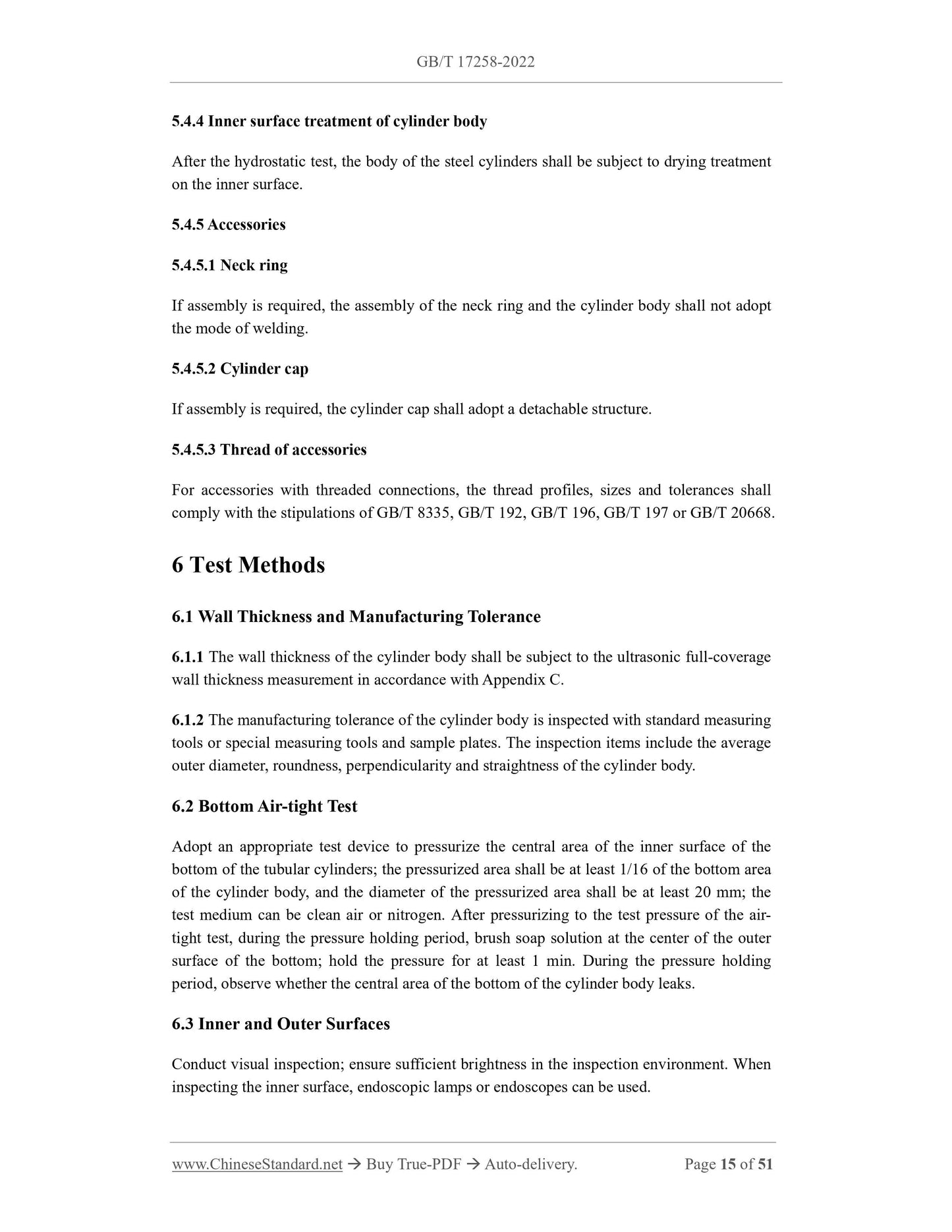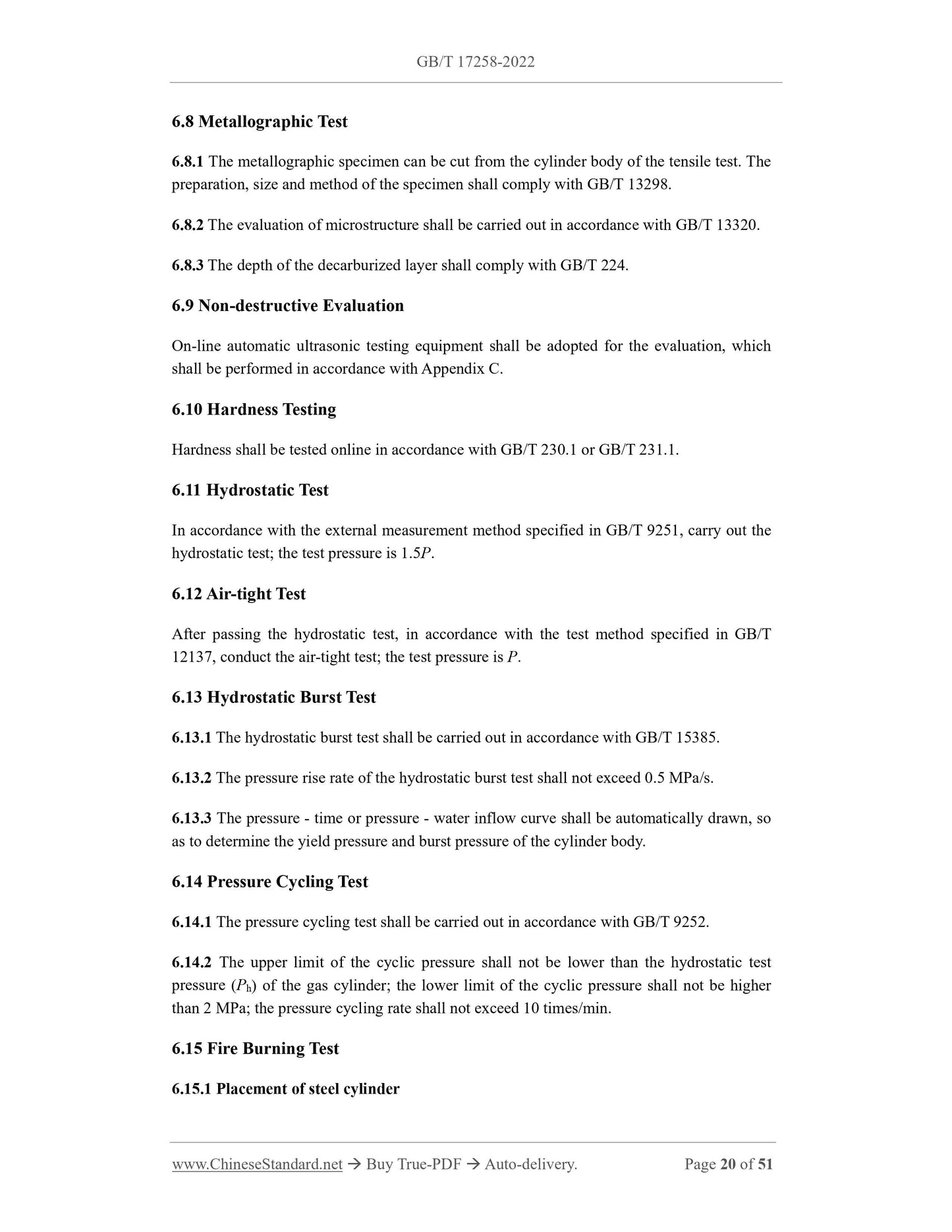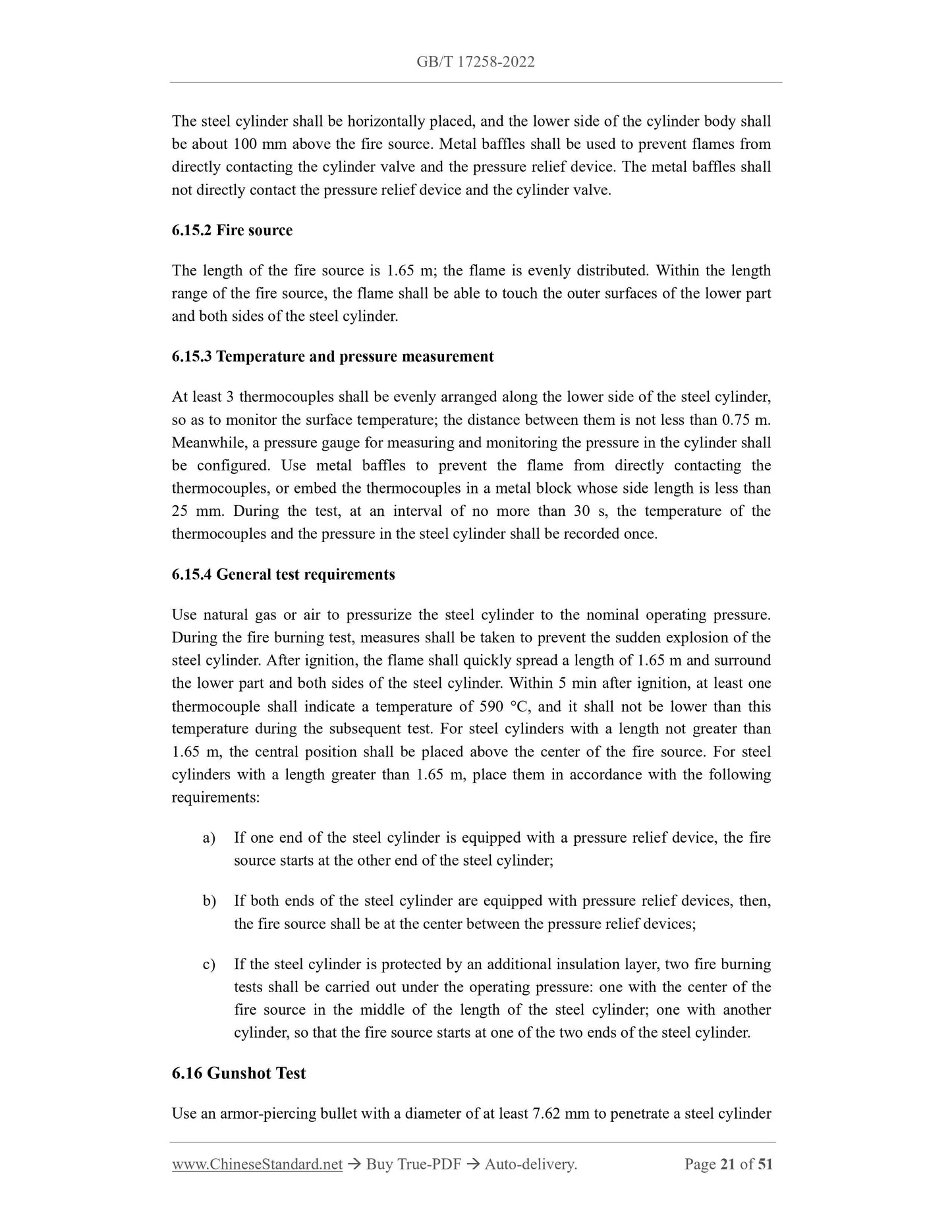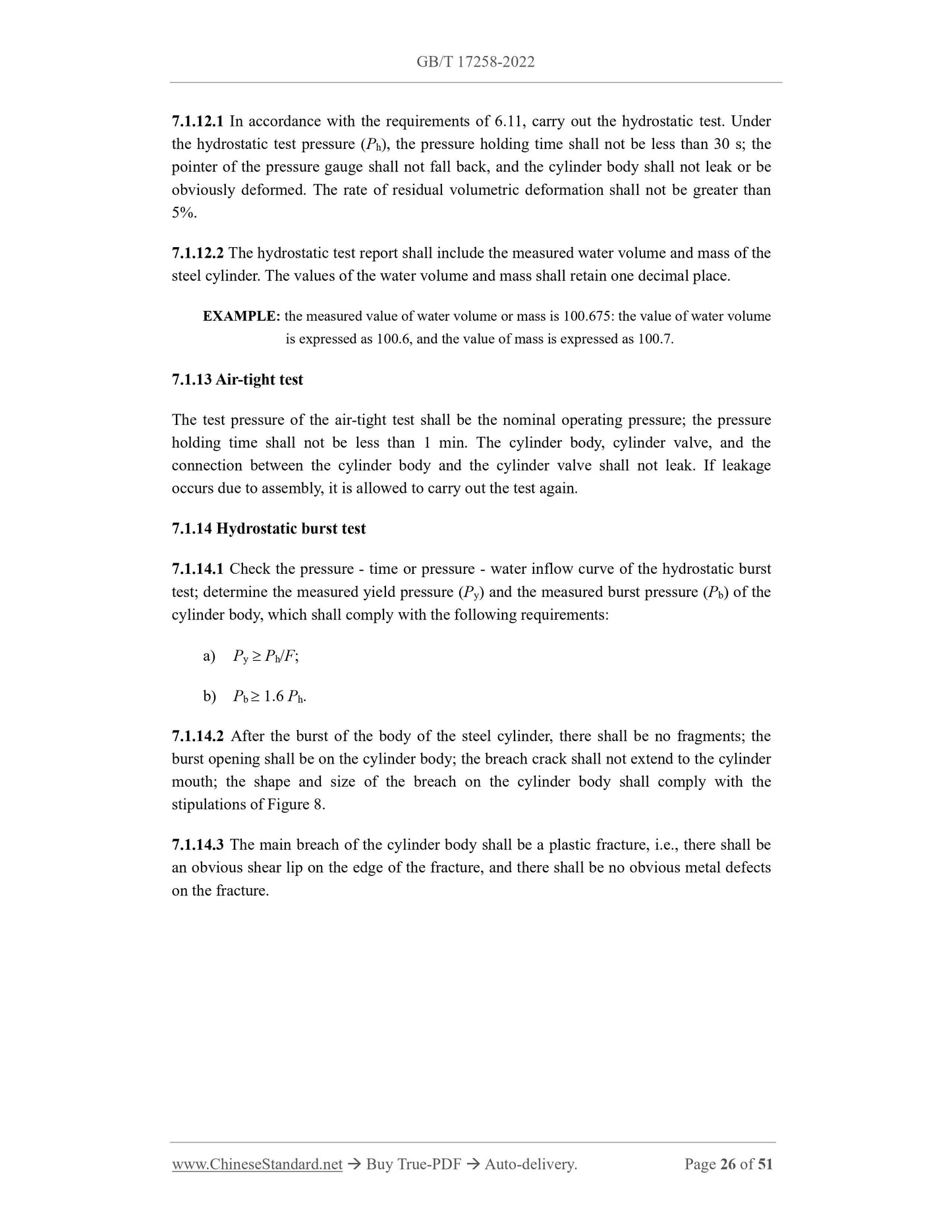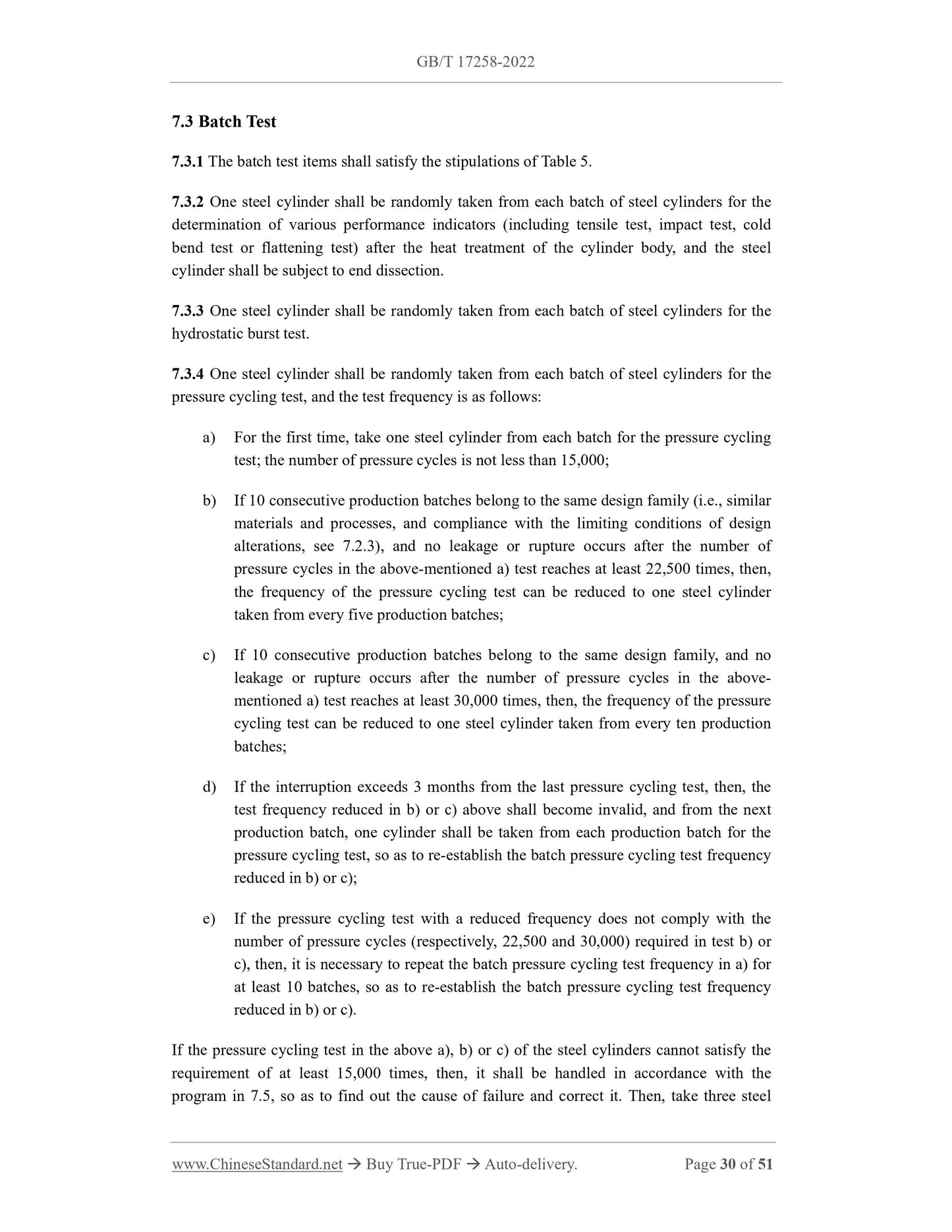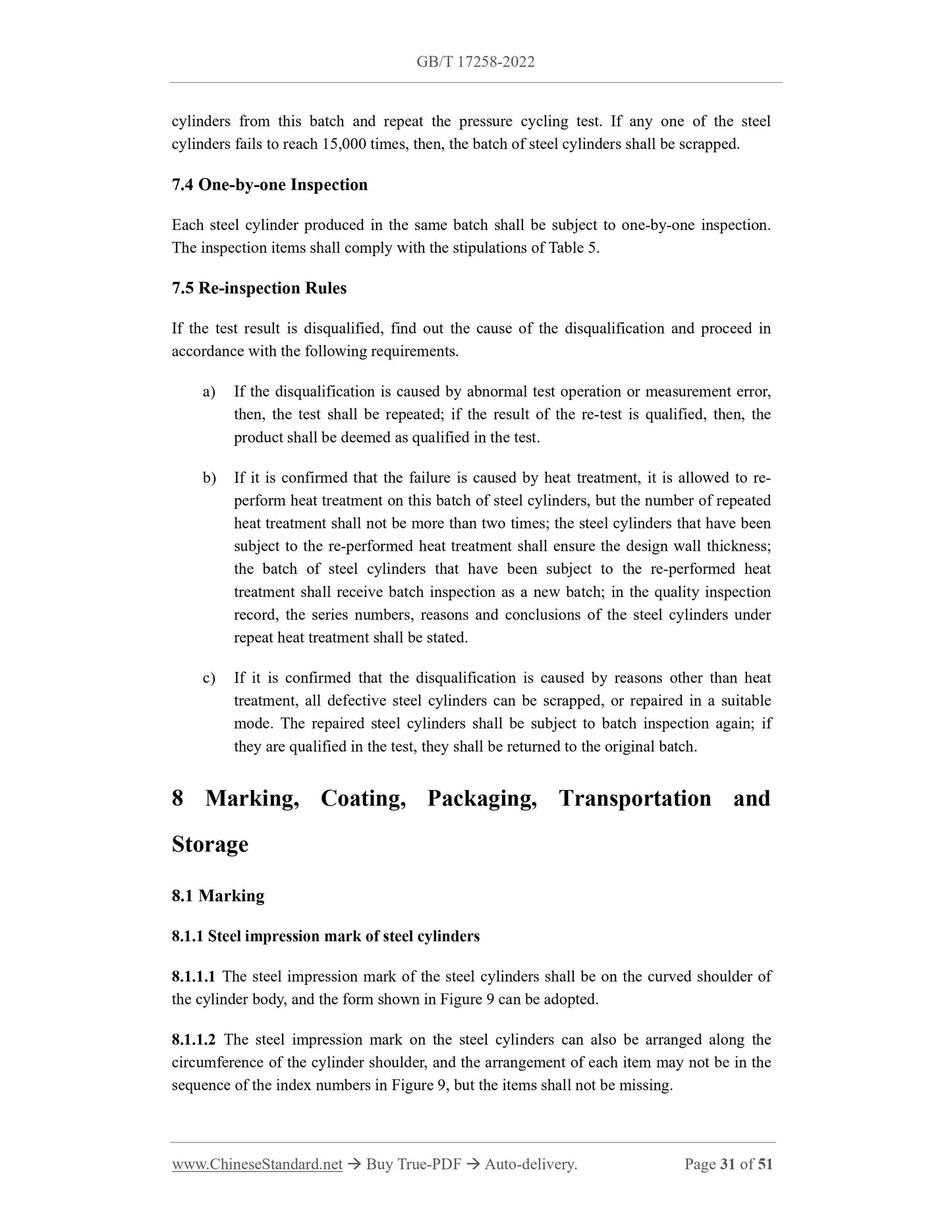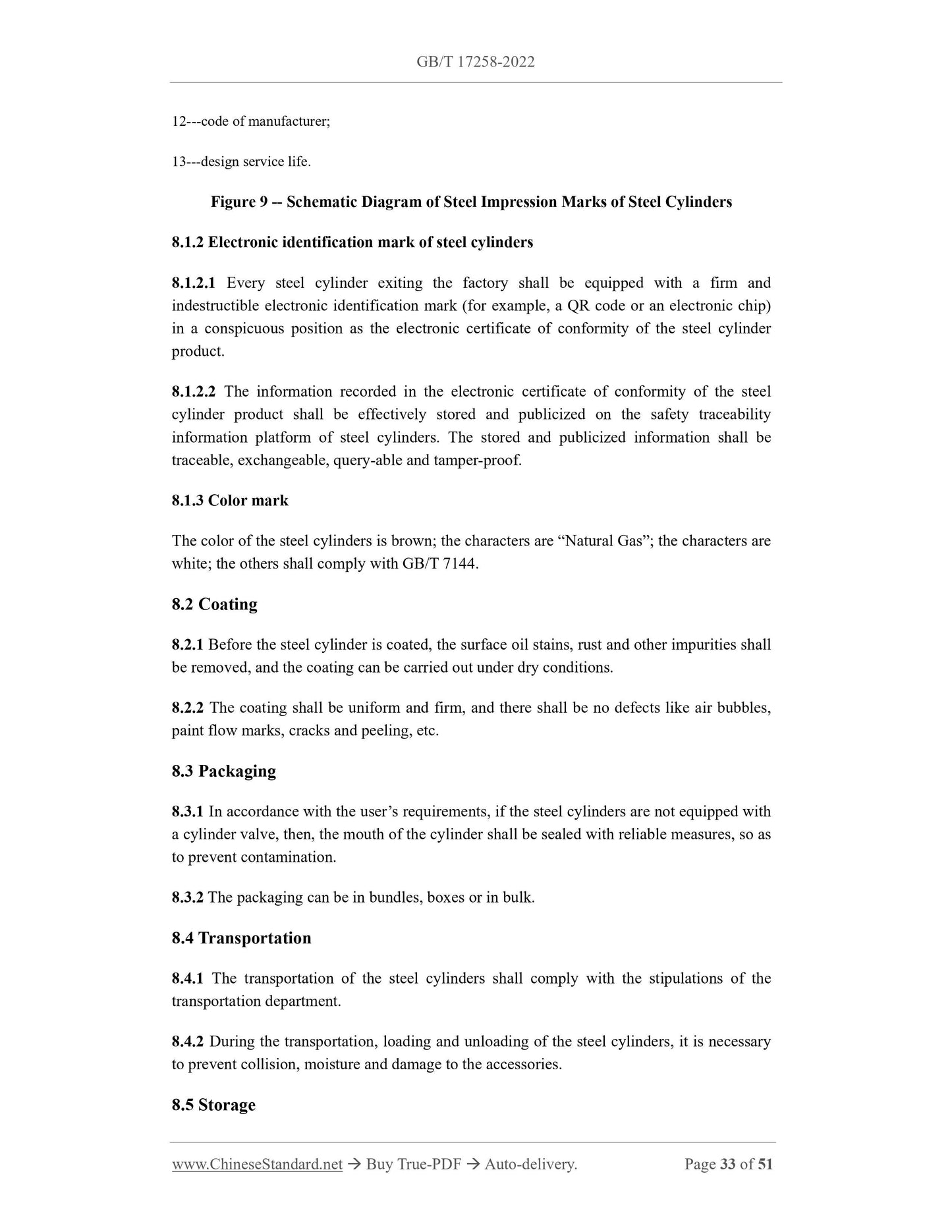1
/
of
12
www.ChineseStandard.us -- Field Test Asia Pte. Ltd.
GB/T 17258-2022 English PDF (GB/T17258-2022)
GB/T 17258-2022 English PDF (GB/T17258-2022)
Regular price
$560.00
Regular price
Sale price
$560.00
Unit price
/
per
Shipping calculated at checkout.
Couldn't load pickup availability
GB/T 17258-2022: Steel cylinders for the on-board storage of compressed natural gas as a fuel for automotive vehicles
Delivery: 9 seconds. Download (and Email) true-PDF + Invoice.Get Quotation: Click GB/T 17258-2022 (Self-service in 1-minute)
Newer / historical versions: GB/T 17258-2022
Preview True-PDF
Scope
This document specifies the types and parameters, technical requirements, test methods,inspection rules, marking, coating, packaging, transportation and storage requirements of
steel cylinders for the on-board storage of compressed natural gas as a fuel for automotive
vehicles (hereinafter referred to as “steel cylinders”).
This document is applicable to the design and manufacturing of steel cylinders with a
nominal operating pressure of 20 MPa and 25 MPa, a nominal volume of 30 L ~ 300 L, an
operating temperature of 40 C ~ 65 C and a design service life of 15 years.
The steel cylinders manufactured in accordance with this document are only used as the
storage containers fixed on automotive vehicles and filled with compressed natural gas as
automobile fuels that complies with GB 18047; additional loads caused by external forces,
etc. are not included in the service conditions.
This document does not apply to gas storage steel cylinders used at compressed natural gas
filling stations, nor does it apply to steel cylinders of welded structure.
Basic Data
| Standard ID | GB/T 17258-2022 (GB/T17258-2022) |
| Description (Translated English) | Steel cylinders for the on-board storage of compressed natural gas as a fuel for automotive vehicles |
| Sector / Industry | National Standard (Recommended) |
| Classification of Chinese Standard | J74 |
| Classification of International Standard | 23.020.30 |
| Word Count Estimation | 38,318 |
| Date of Issue | 2022-10-14 |
| Date of Implementation | 2023-05-01 |
| Older Standard (superseded by this standard) | GB/T 17258-2011 |
| Issuing agency(ies) | State Administration for Market Regulation, China National Standardization Administration |
Share
